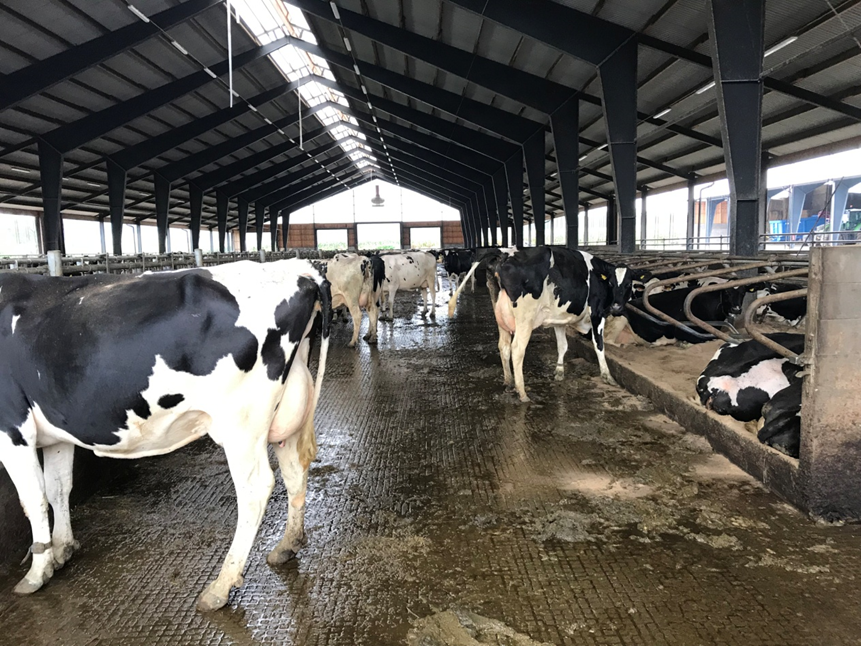News
Herd Health Decisions and Tasks for the Dry Period
The dry period gives the dairy cow the opportunity to rest and recover from the most recent lactation. It is arguable the most important part of the production cycle to get right, particularly in terms of udder health and nutrition. Cows should be calving down free from infection in the udder, in the correct body condition score, and with the risk of metabolic diseases like milk fever minimised.
The dry period also offers the opportunity to address some of the herd’s veterinary requirements like dealing with any parasite burden and carrying out routine vaccinations. If you are availing of the Munster Bovine disease testing through the bulk milk, the last of the four rounds of testing will arrive in late November. Liver fluke, stomach worms and Neospora are tested for in the last round.
Parasites.
The main internal parasites to consider when dosing cows during the dry period are liver fluke, rumen fluke, stomach worms and lung worm. All the doses licenced to treat internal parasites in dairy cows, apart from eprinomectin, either have a milk withdrawal or are not permitted for use during lactation. Also because cows are housed for the winter while they are dry, they cannot pick up parasites from pasture. This makes the dry period the ideal time to treat parasite burdens.
Liver fluke
The bulk milk results for liver fluke are extremely useful when making treatment decision. The test is completed 4 times during the year and is extremely sensitive. A positive test is very significant and needs to be acted on. Continuous negative tests over a number of years builds confidence that there is no liver fluke on the farm and treatment for liver fluke may not be necessary.
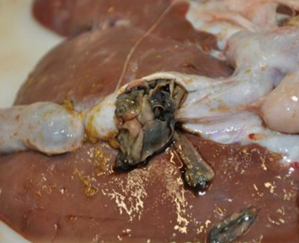
Rumen fluke
There is no useful test for rumen fluke in the milk. While dung sampling for liver can be hit and miss due to intermittent shedding of eggs by mature liver fluke or the fluke not being matured to the adult stage whereby it will produce eggs (this takes around 12 weeks), testing dung will easily pick up rumen fluke eggs if present. Most herds will test positive for rumen fluke eggs if tested. This means that cows have some burden of mature rumen fluke on the lining of the rumen wall. Mature rumen fluke a low levels have little impact on cows’ health or production. The advice from animal health Ireland is to only treat cows showing clinical signs like very loose dung. Rumen fluke is more significant in young animals as it is the migrating larvae in the small intestine that cause the clinical signs.
Stomach Worms and Lung Worm
Any drug used to treat for stomach worms will also treat lung worm. In general adult cows should have good immunity to both. Like all the tests in the bulk milk screen, the stomach worm test is identifying antibodies, which is a measure of the herds immune response. In general, results in the milk are higher this year because of the wet weather and have risen as the year progressed. This is expected, as cows are picking up the parasite, their immune system is responding and antibody readings will rise. This does not necessarily mean that all cows will have a burden of significance. Most cows in the herd should have strong immunity and a low burden.
Blanket Dosing and Anthelmintic Resistance.
We know from studies in recent years that there resistance present in Ireland, to the common drugs used to treat stomach worms. If there is resistance present in the worm population on your farm, blanket doing will actively select for the resistant worm population. This is because the drug will be effective against the susceptible worms and will not work against the resistant ones. Continuous blanket dosing will accelerate the development of resistance in the stomach worm population.
When dosing for worm in the cows, consider being selective. Prioritise thin cows, loose cows and young cows. Consider not treating the remainder for worms.
Lice and External Parasites.
If cows develop a lice burden, it will cause significant scratching and stress in the herd which will impact wellbeing and performance. Treat early with a spot on or pour on for lice to prevent a lice burden developing. More than one treatment over the housing period may be required.
Best Practice for Dosing Procedure.
- Avoid underestimating bodyweight. Ensure you are dosing to bodyweight and above. Under dosing will lead to an ineffective treatment and is a disaster for the development of resistance.
- Ensure equipment is working correctly. Equipment that is not working properly will lead to under dosing and the same issues as above.
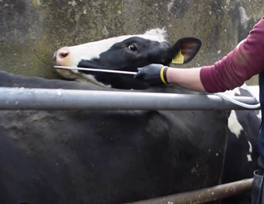
Ensure dosing equipment is working properly
Correct use of dosing products is extremely important to ensure that animals are being treated for what they need and to ensure the treatment is not unnecessarily accelerating resistance development on the farm. Seek veterinary advice to plan an appropriate winter parasite control strategy for your herd. This area is `covered during the Munster Bovine end of year veterinary consults.
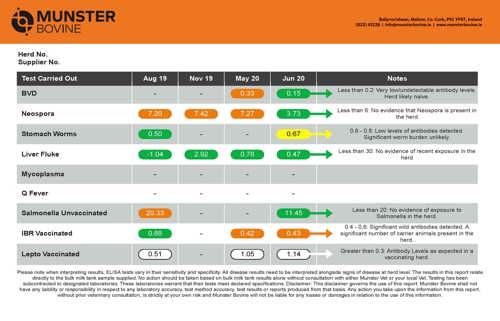
Vaccinations during the dry period.
- Completing routine vaccinations during the dry period makes sense for a number of reasons.
More available time on the farm and less pressure on the herdowner. It is harder to find time during the year especially during the spring. - Cows under less pressure. Dry cows or cows in late lactation are under less pressure and their immune system will be able to respond better to the vaccine.
Leptospirosis
Traditionally Leptospirosis was a prebreeding vaccine. There is no reason why Lepto cannot be vaccinated for during the dry period. Over two thirds of the herds in the Munster herd health programme are recorded as vaccinating. Out of the remaining third, very few test completely negative. Every year we come across unvaccinated herds that run into trouble with a Lepto outbreak. Our advice, from both an animal health and a human health perspective is to vaccinate.
IBR
IBR vaccination has proven hugely effective at controlling, preventing and reducing levels of IBR in dairy herds over the 10-15 years since vaccination for the virus has become more common. The bulk milk screening using the IBR vaccinated test consistently demonstrates that a robust vaccination programme will reduce the levels of antibody coming from natural infection from year to year.
The dry period is an ideal opportunity to complete one IBR vaccination. IBR is a herpes virus that can reactivate during times of stress. Vaccinating pre-calving, before the period of highest stress makes sense. Whether herds should be once yearly or twice yearly is always a topic for debate. Herds should be achieving a consistently low reading on the bulk milk vaccinated test ( readings of 0.7 or over) before considering switching to once yearly vaccination.
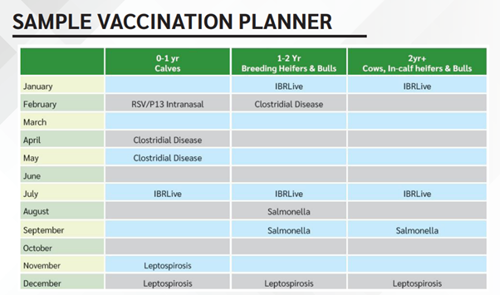
Best practice for vaccination.
• Store all vaccines in the fridge.
• Always use sterile needles and change frequently.
• Ensure vaccination guns are clean and working correctly.
• Use the right dose rate and the right route. Intramuscular vaccines need longer needles (minimum 1 inch and 18 to 16 Gauge max).
• Do not to use vaccines within 14 days of each other unless the manufacturing company license allows, or if directed by your veterinary surgeon.
Related Articles
Achieving Your Breeding and Fertility Goals - Milk Matters April 2024

Herd Health Meetings with Munster Bovine Vets this Autumn – Common Threads and Lessons Learned During 2023.
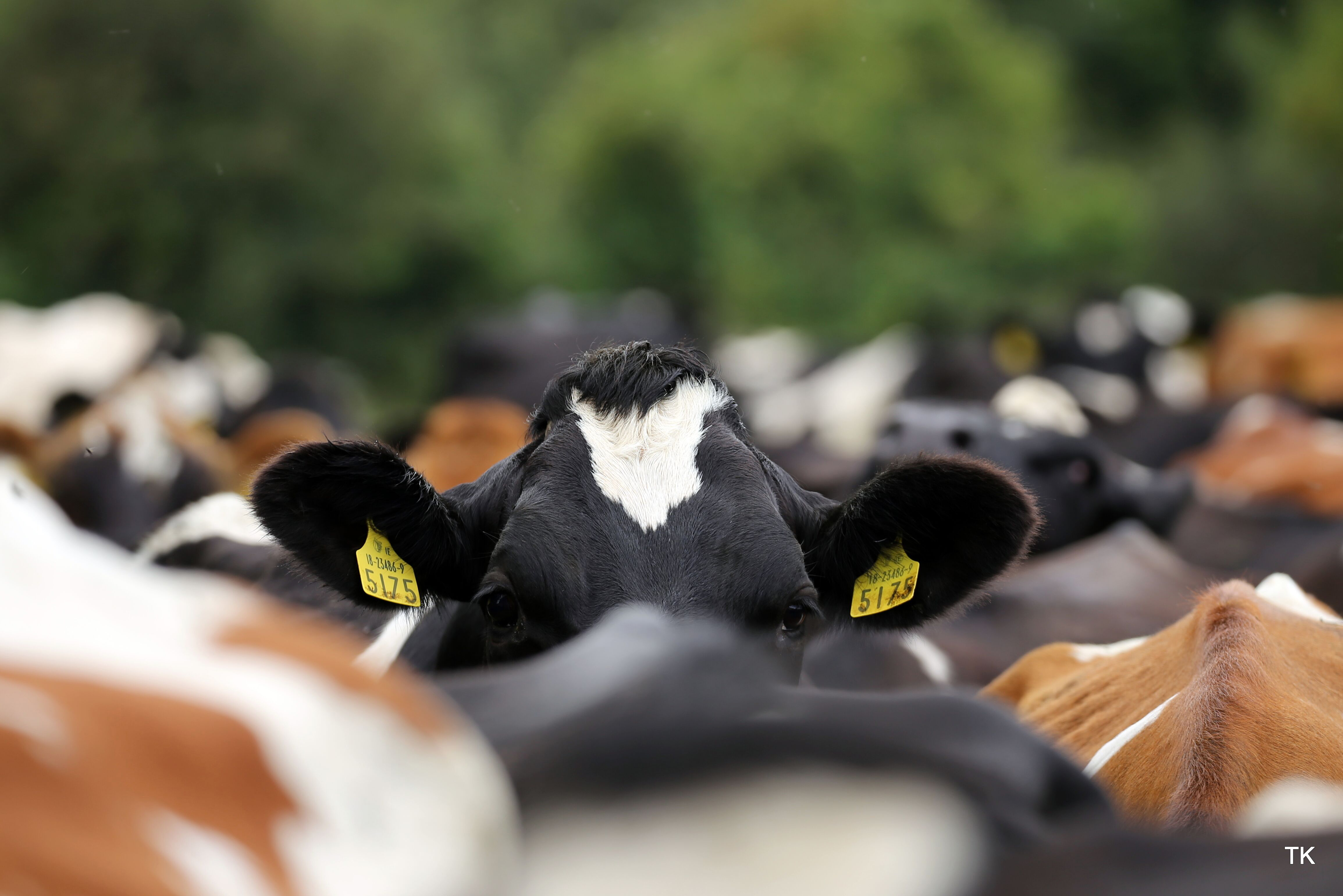
Munster Bovine Launches New Website

Successful Cow Housing System Guide
